Collecting customer feedback is like a treasure hunt—your treasure could be right in front of you, but if you don’t know exactly where to look, you’ll never find it.
That’s why you need to use different methods for collecting customer feedback. However, the sheer number of channels and customer types makes it hard to pinpoint exactly which feedback collection methods work best for your needs.
Use this guide to understand what customer feedback is, why it’s important, and how to collect it. We also look at 4 different customer feedback examples from real online businesses and give you actionable tips to inform your customer feedback strategy and improve the customer experience (CX).
What is customer feedback and why is it important?
Customer feedback is any form of input or insight your customers have about your product or service. Collecting customer feedback shows customers that you value their opinion and business—and are proactive about improving their experience.
Asking for customer feedback and implementing suggestions helps you
Understand what drives customers to your site: learn why users came to you, what stopped some from becoming customers, and what persuaded others to buy from you
Improve parts of your product, like the user experience (UX) and user interface (UI): act on negative feedback from unhappy customers to improve the way they interact with your site
Gain ideas for product features and backlog management: collect feature requests and prioritize new features based on product feedback
Retain more customers and increase customer loyalty: reduce churn and show users you care about their feedback by implementing their suggestions in your product roadmap
Identify future customer frustrations and blockers: create a feedback loop and automate the way you gather feedback to drive continuous insights collection and make improvements
Elevate the customer and post-purchase experience: build trust by creating a customer-centric culture to turn users into loyal customers and increase customer lifetime value (CLV)
Improve customer support: let customers tell you what they thought of their interaction with your support team, and work with team members to improve this key touchpoint.
When done right, customer feedback feeds into the way you do things so that you can improve. It's not just a nuisance you need to do because your business needs to appear responsive. Rather, it's something that helps you figure out the external viewpoint. The point is to allow for the customer feedback process to turn into a virtuous cycle where each piece of knowledge will inform your steps, goals, and strategies.
Remember, there are 2 main types of customer feedback you can collect:
Solicited customer feedback that you directly request from your customers. Use this type of feedback to ask pointed questions about specific product features, bugs, or updates—and put your customer at the center of your product improvements.
Unsolicited customer feedback that comes indirectly from your customers without prior request. Find this customer feedback on review websites and social media channels to gauge customer sentiments and satisfaction in the wild, and spot important product fixes or updates.
6 ways to collect customer feedback and spark engagement
Collecting and responding rapidly to customer feedback not only gives you actionable input, but also demonstrates your commitment to improving user engagement and your customer experience.
Use the collection methods below to get essential customer insights and inform your customer feedback strategy. Prioritize feedback by grouping and addressing comments that are immediately actionable and will have the biggest impact on your customers' experience. Then, move on to feedback that might take longer to implement.
For example, if most of your customers request more self-service options on your website, prioritize this to immediately improve customer satisfaction—and return later to more specific feedback from just a handful of customers.
1. Focus groups and user interviews
Conducting face-to-face interviews and focus groups is a great way to create a following of devoted customers and deliver customer-centered service. By creating an intimate forum to collect customer opinions, you discover the true value of your product in their eyes and develop realistic action plans to better meet their needs.
How to collect feedback from focus groups and interviews:
Segment your customers: organize customers by geographic location, role, or industry for insights based on the experience, drivers, and needs of specific user personas.
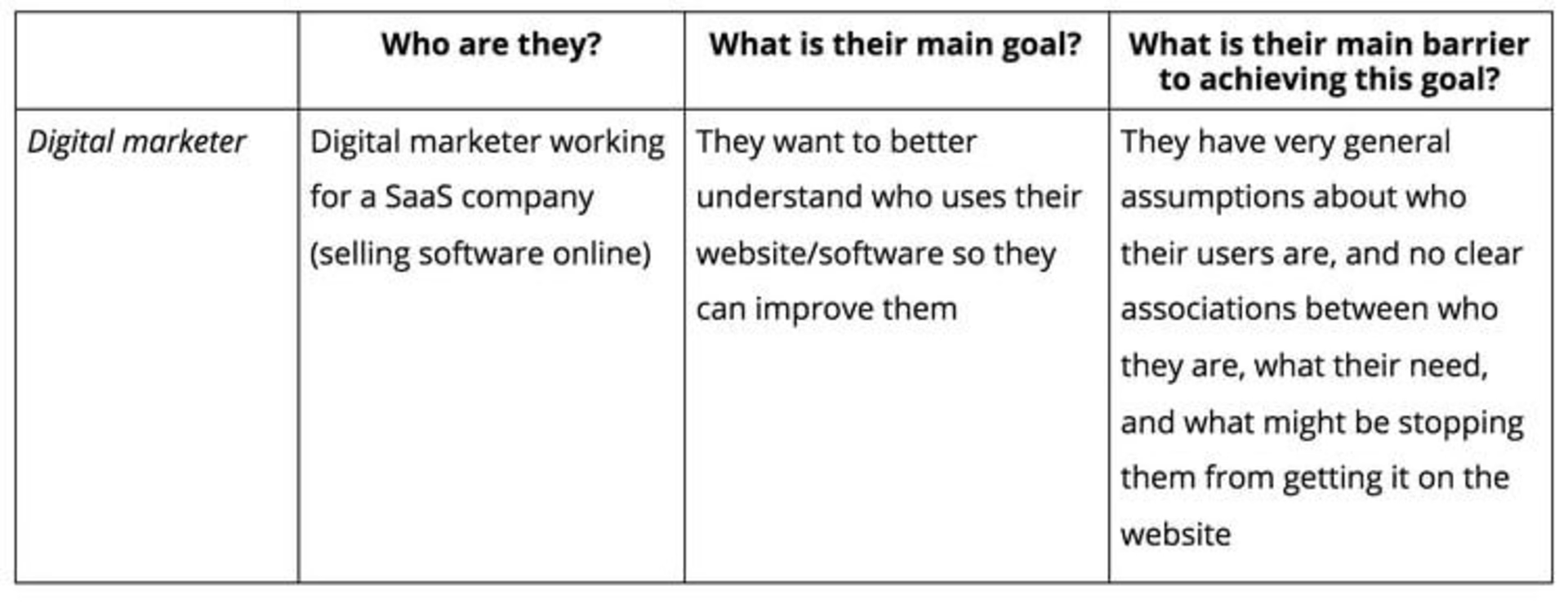
A user persona template defining personas and their main goals and objectives
Strategically choose your questions and prompts: ask targeted, open-ended questions for more actionable, focused feedback. For example, if you’re hosting a focus group centered on the launch of a new product feature, ask your customers how they use it, what it helps them achieve, and what they like or dislike about it.
Stay on topic: while letting the conversation flow naturally can help shed light on interesting insights, it’s important not to go overboard and miss getting the answers you need
Spot patterns in customer input: group and analyze popular themes or topics in your feedback. Then, use your insights to prioritize your product backlog and make changes to create customer delight.
💡Pro tip: use Contentsquare’s Interviews tool to gather customer feedback by recruiting users, then hosting, recording, and transcribing your calls with them.
Involve your team in the user testing process by sharing your notes on AI-generated interview transcriptions and turning the insights into a product development plan.
![[Visual] user interviews](http://images.ctfassets.net/gwbpo1m641r7/7c46zJmxfZX3QWRc8y3A3S/76ccc1bd4b22ecf66805d94bc9d7d4f0/user_interviews.png?w=1920&q=100&fit=fill&fm=avif)
Contentsquare’s AI-powered Interviews tool generates transcriptions of user interviews for easier note-taking
2. Surveys
Using surveys to collect customer feedback gives you qualitative and quantitative insights into the exact topics you want to explore about your product or customer experience.
Use on-site customer feedback surveys or send email surveys after customers interact with key touchpoints or complete certain actions. Their answers help you know exactly what to prioritize and improve, gauge customer satisfaction over time to get a broader view of how your product is performing, and more. Automate surveys to create a continuous customer feedback loop.
So, which types of surveys can you use to get actionable customer feedback?
Customer satisfaction (CSAT) survey: use customer satisfaction surveys to better understand specific touchpoints and micro-experiences throughout the customer journey by asking customers to rate their experience, and provide a reason for their customer satisfaction score
NPS® survey to get your Net Promoter Score®: ask customers to rate their likelihood of recommending your product or service on a scale of 1–10, happy or sad, or any metric you like, for insights into long-term customer satisfaction. Use customer feedback from detractors to gain insights into major pain points.
Customer effort score (CES) survey: gauge how easy it is for your customers to use your product or service
Exit-intent survey: ask customers why they’re leaving a specific web page. For example, your ecommerce company might place timed exit-intent surveys on key conversion pages like checkout, to determine any issues in the checkout experience.
Product-market fit survey: determine how your target customers perceive and use your product, and whether it stacks up to competitors
💡Pro tip: our survey templates let you add, remove, or modify survey questions. You can further customize your surveys by choosing whether to display them as pop-ups, screen takeovers, or after users click a button. Targeting and behavior options ensure you show your surveys to the users you want (new customers, returning users, etc.) in the way you want them to (show only once, show after a delay, etc.).
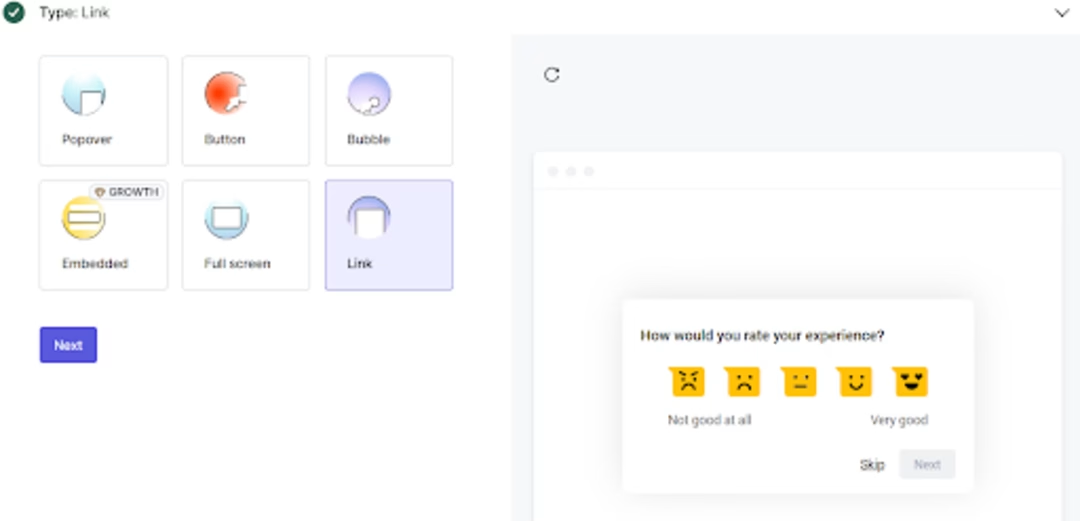
3. Feedback forms and widgets
Customer feedback tools like forms and widgets let you gather quick insights into customer sentiments and frustrations at pivotal moments throughout their journey.
Here’s how to collect feedback with forms and widgets, so you can spot bumps in the customer experience and better understand your customers:
Place feedback widgets and forms on key pages or touchpoints, such as onboarding, sign-up, and checkout, to get instant feedback on potential product and website improvements. See exactly where customers encounter problems as they highlight snippets of your web page or digital experience.
Compare customer feedback across your web pages to determine weak or underperforming areas of your website. If you’re using Contentsquare Dashboards, you can easily compare your feedback score on key pages, so you know which pages need more attention.
![[Visual] Feedback button - How would you rate your experience](http://images.ctfassets.net/gwbpo1m641r7/6zpie5F6Gwd4oyqXaxBfcN/b7e9b7f3bfcc6265f47b5294d8fec319/Feedback_button.png?w=3840&q=100&fit=fill&fm=avif)
Contentsquare’s feedback widget lets customers highlight parts of the page they like or dislike for deeper insights into improvement
💡 Pro tip: supercharge your customer feedback by using Contentsquare’s Session Replay tool to watch user sessions on your website. Segment your recordings by key actions, like users filling out a feedback form, so you see exactly what’s adding to—or subtracting from—the customer experience.
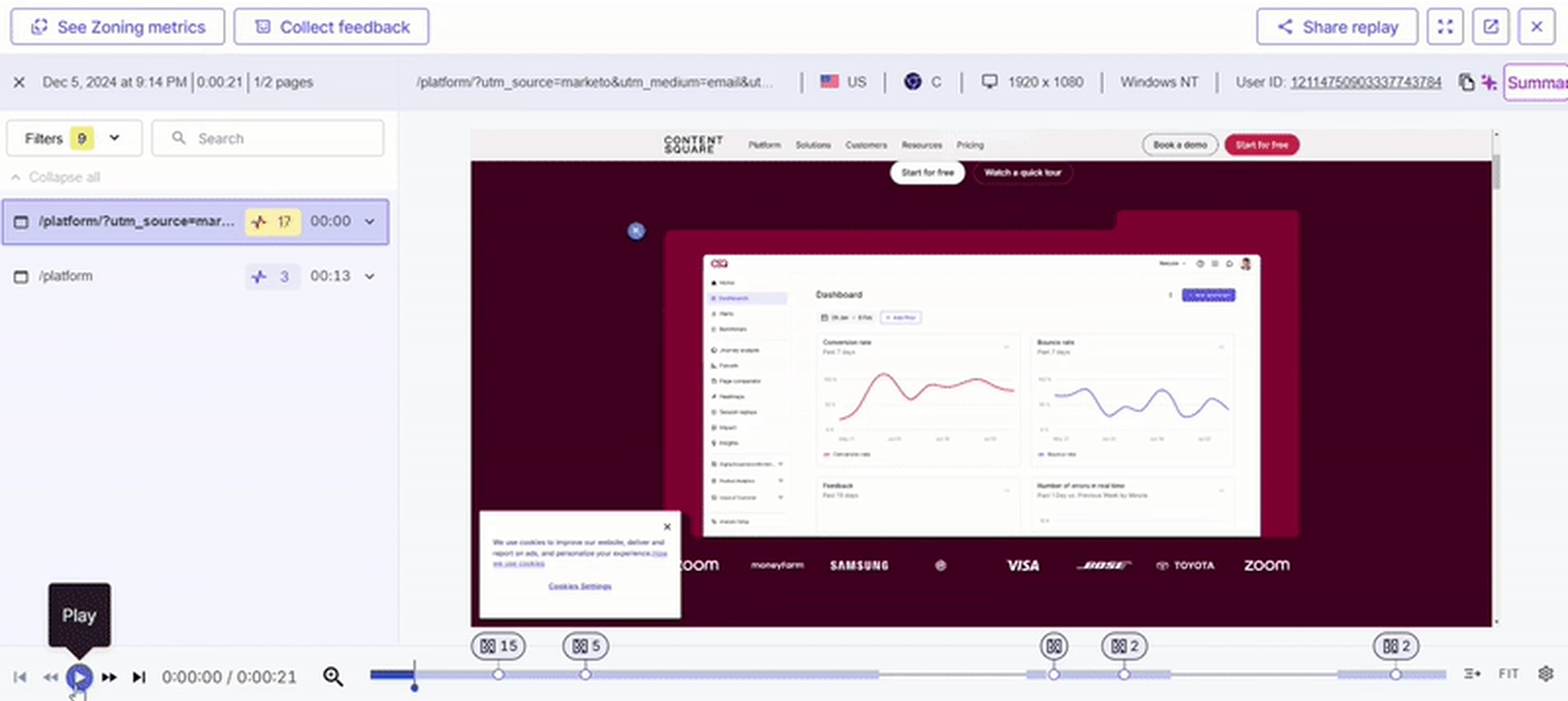
Contentsquare’s Session Replay tool in action
4. Customer service
Using and analyzing customer service interactions as a source of feedback gives you key insights into common issues customers face and ideas for improving the customer and product experience.
Use your customer service channels and customer feedback software to collect and sort feedback based on categories like product improvements, self-service resources, bug fixes, product design, or product usability.
Group customer service feedback by volume and category to better prioritize product updates and potential feature rollouts. Here’s how:
Use chatbots like Livechat for insight into common customer experiences, issues, or resource requests—and keep your finger on the pulse of how customers are feeling and thinking
Use customer service automation tools like Freshdesk to spot patterns in customer service tickets and bug reports—and proactively respond to and meet customer needs. For example, your SaaS startup might review customer service tickets after a new product rollout to spot any immediate issues that might negatively impact the customer experience.
Leverage customer service phone calls with tools like Dialpad to get an overview of customer product usage and adoption
💡 Pro tip: use the Contentsquare x Slack integration to easily share customer feedback across teams. Keep sales, marketing, product, customer success, and leadership teams in the loop and embrace cross-functional collaboration for deeper insights and learnings.
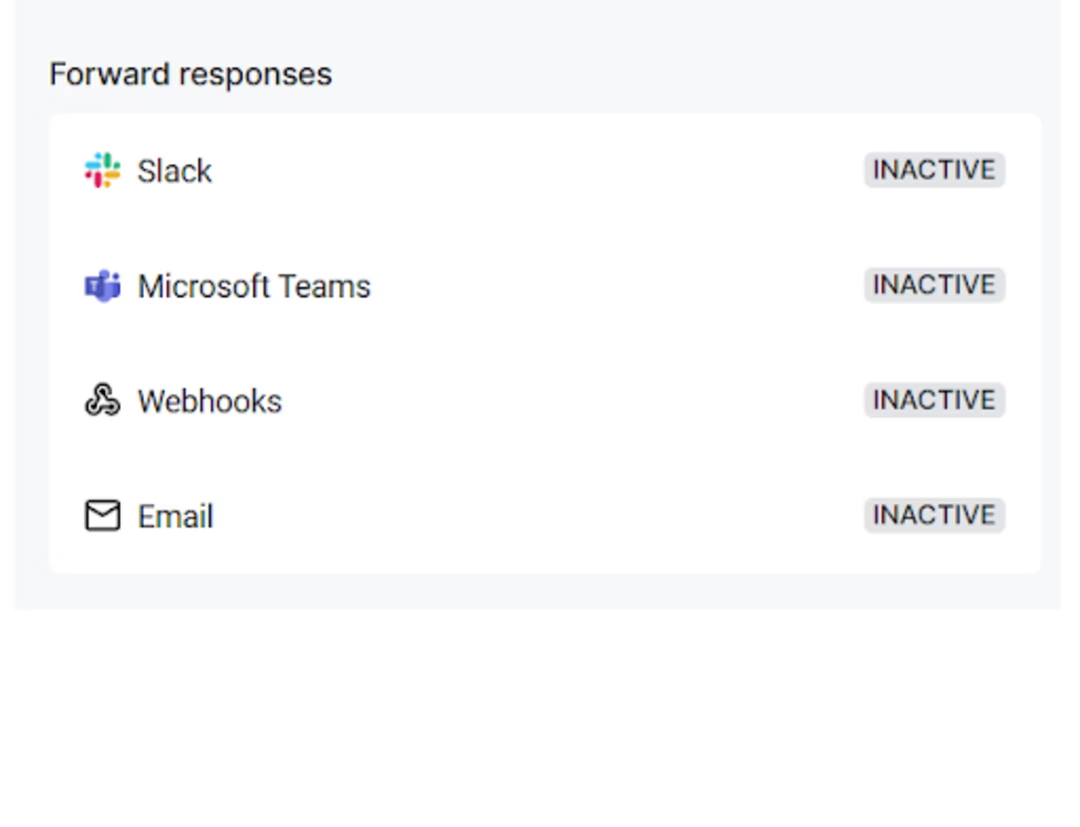
The Contentsquare x Slack integration keeps your teams on the same page with incoming customer feedback
5. Social media and online reviews
Social media and online reviews are examples of unsolicited customer feedback that give you unfiltered insights into popular customer sentiments, problems, and experiences.
Since customers speak more openly on social media and review sites, use this type of feedback for a more holistic understanding of your product experience—and gain direct visibility into common customer demands and needs.
How to get customer feedback from social media and online reviews:
Use sentiment analysis and social listening tools like Hootsuite to track mentions of your product across social media channels. Learn what customers think and understand how your product makes them feel to make customer-centered product decisions and improvements.
Check out review sites like Capterra, G2, Trustpilot, and TrustRadius for product reviews and competitor analysis, and see if your product meets market and customer needs. For example, after noticing your competitor has a highly rated feature, your product team might add it to their product backlog for future consideration and development.
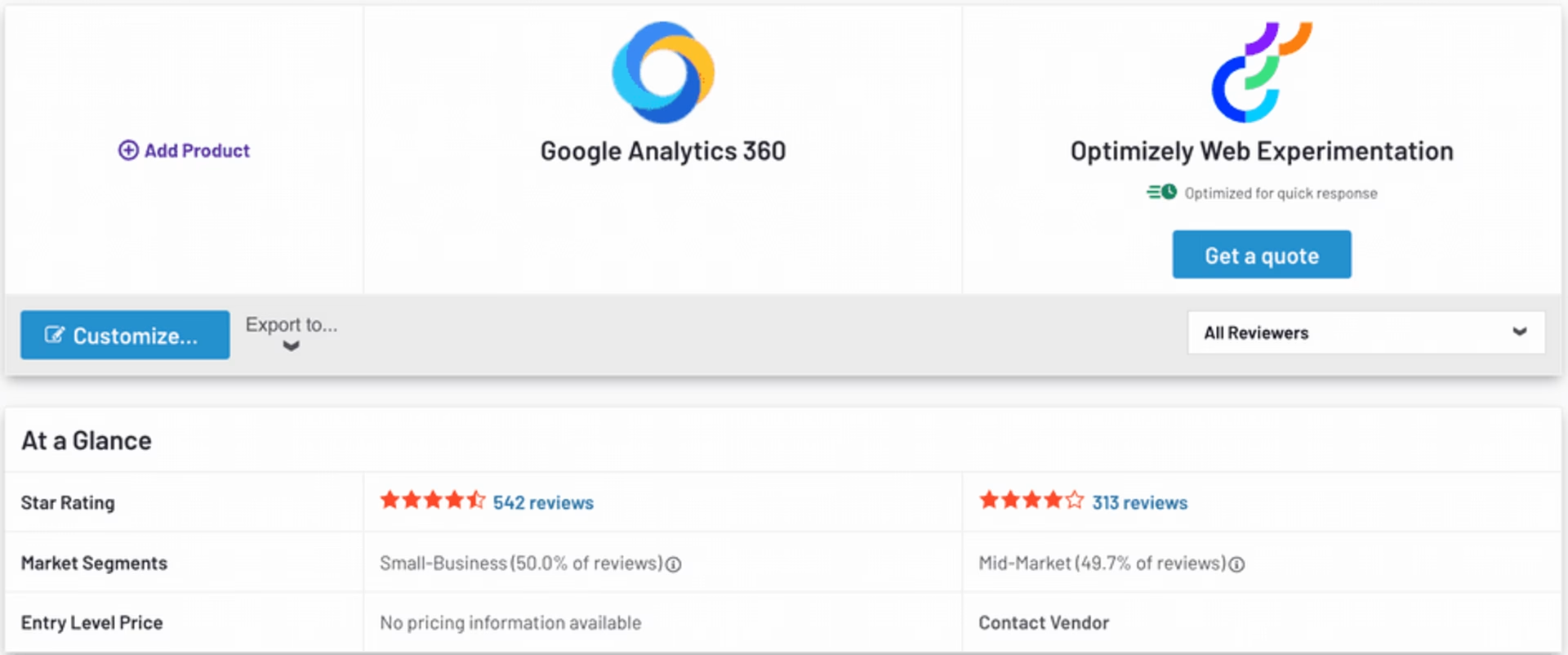
Access customer reviews and see how your product stacks up against your competition on review websites like G2. Source: G2
6. Sales calls
Using sales calls as a source of customer feedback supports a cross-functional, collaborative approach to understanding your customers. Sales calls tell you about market demand—and what customers think about your product experience, features, and usability.
Monitoring and analyzing sales calls also gives you direct insight into how customers talk about your product and the specific problems it helps them solve—so you can better communicate with them in their own language (and use it to inform your website and marketing copy).
How to collect customer feedback from sales calls:
Transcribe sales calls with tools like Salesloft to help you understand the content of important calls and reveal customer insights—and use them to spot patterns in the customer journey and experience
Analyze sales calls with revenue intelligence tools like Gong to track and analyze customer-facing interactions and better identify customer pain points, so you know exactly how to meet customer needs
4 customer feedback examples and ideas to guide and inspire you
Collecting customer feedback brings numerous benefits, from higher conversion rates to more devoted users. But to enjoy these advantages, you need to start asking your customers the right questions.
We know that can be easier said than done, so we’re here to give you examples of successful customer feedback approaches and show you how to implement these techniques with your own users.
1. Apple: post-purchase surveys to ensure customer satisfaction
Apple is a prime example of how collecting customer feedback can set you apart as an industry leader. Steve Jobs said it best himself: “One of the things I’ve always found is that you’ve got to start with the customer experience and work backward to the technology.”
One of the reasons Apple is so good at giving its users what they want is because it actively reaches out and listens to them. It makes it easy for users to share opinions about their products, often sending out surveys after a customer makes a purchase to gauge their satisfaction with it.
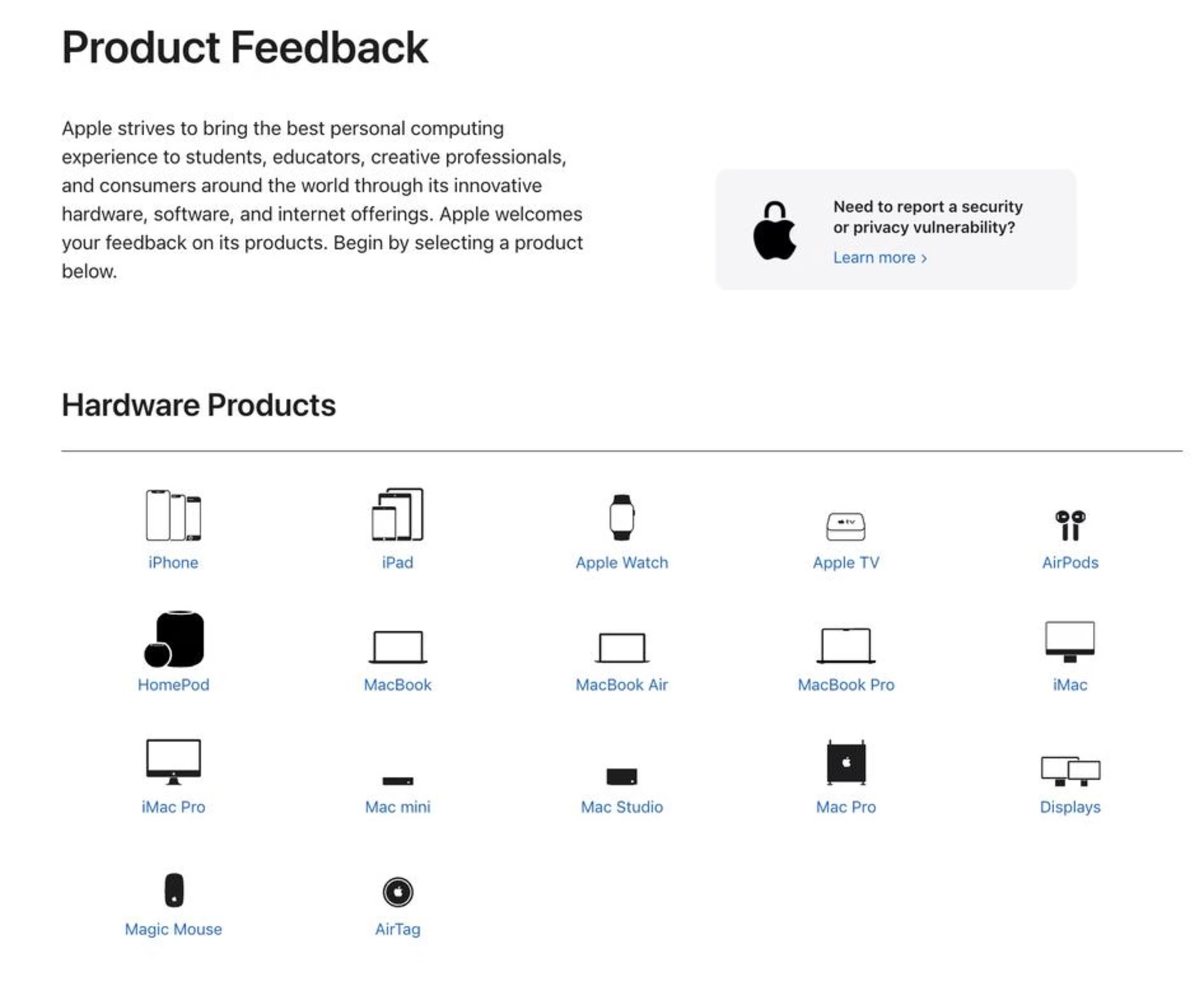
Apple makes it easy for users to leave specific feedback about particular products. Source: Apple
But Apple doesn’t just focus on getting feedback on its products and features—the company also collects insights about the overall customer experience (CX).
After a customer makes a purchase at the Apple Store, they receive a link in an email containing their receipt to share feedback about their experience. This allows Apple to improve its customer service interactions, which play a big role in overall customer satisfaction.
Unsurprisingly, Apple is a market leader when it comes to NPS®—a measure of how likely customers are to recommend your product to others. Apple’s NPS score for 2024 is 68, and Apple Music has an NPS® score of 55, positioning it at the top of its industry.
💡So, how can you follow in Apple’s footsteps? Listen to everything your customers have to say, both about your product and the overall customer experience. Send out a survey after they make a purchase to understand how they feel about their experience and your brand as a whole.
By making an effort to listen to them, you get the feedback your customers may not have shared unless prompted—so you can give them a product and experience that surpasses their expectations.
2. Ryanair: customer surveys to better understand the buyer journey
Customer feedback doesn't just help you understand what your customers want to achieve with your product: it also helps you better understand the buyer's journey. That’s exactly what Ryanair does: using surveys, the team gauges whether customers seamlessly navigate their website, detects barriers to purchase, and measures general user satisfaction.
Ryanair successfully addresses its buyers’ pain points by asking open-ended questions to identify user frustrations. Then, it sends out multiple-choice surveys directly related to these frustrations to better understand where the customer journey needs improvement.
But sending out surveys isn’t just key to understanding your customers and their experience of your purchasing process—it also helps get stakeholders on board with product decisions and keeps everyone in the loop about performance.
💡How to apply Ryanair’s techniques to your business: send out multiple series of surveys to understand your customers’ pain points, so you can pinpoint what improvements you need to make. These findings help you improve your digital experience and justify your decisions and recommendations to decision-makers with customer-backed evidence.
3. Amazon: customer feedback made easy
Amazon founder Jeff Bezos once said he defined Amazon by its big ideas, which included 'customer centricity' and 'putting the customer at the center of everything we do.' So, what’s one of the best ways to put your customers at the heart of your decisions? Make it easy for them to give you feedback.
As you probably know, Amazon empowers its customers to share their opinions by enabling them to leave reviews about their purchases. After all, research shows that displaying reviews can increase conversion rates by 270%, so Amazon reviews are a central feature of the ecommerce giant’s success.
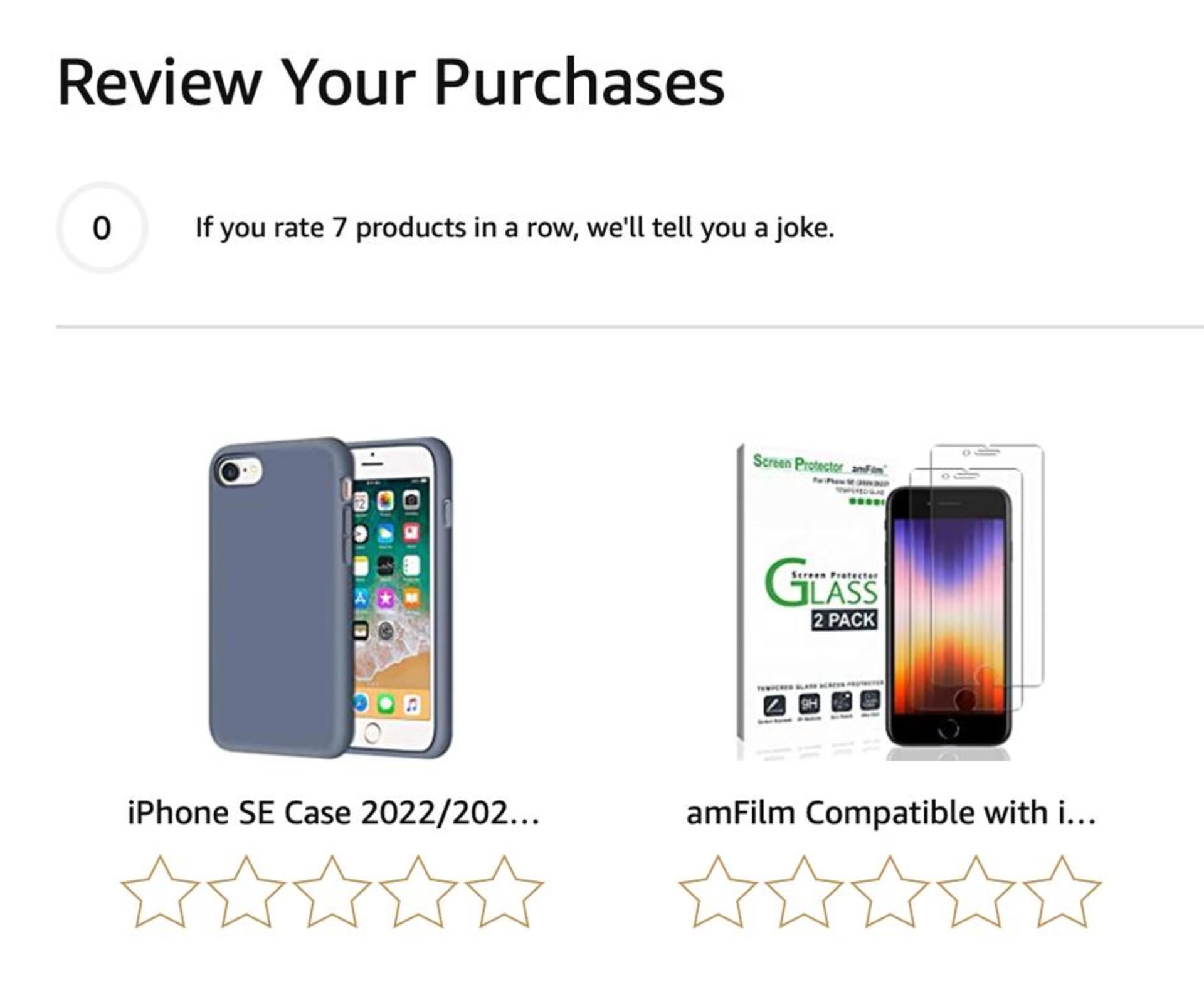
Product reviews are a key element of the Amazon ecommerce platform, which is why it makes it easy and enjoyable for customers to complete them. Source: Amazon
Amazon sends out consumer survey emails asking customers about their experience with the products they purchased. It also offers customers gift cards as incentives for completing surveys, which is a very useful tactic to collect in-depth insights from your buyers.
Like Apple, Amazon collects feedback after every customer service experience. By asking a simple question about whether they solved the customer’s problem, Amazon gives buyers the chance to share feedback—to constantly improve the customer service experience.
So it should come as no surprise that in 2024, Amazon had a customer satisfaction score of 83.
💡How to mirror Amazon’s customer feedback strategy and gain brand loyalty: make it easy for your customers to share their opinions. Include surveys at the end of your customer service conversations and offer incentives for them to share feedback, so you can put your customer at the center of all your decisions.
4. TechSmith: customer feedback to inform product development
They say, “If you build it, they will come.” But what if you build a new product or feature your potential buyers don’t actually want? The best way to avoid this is by using customer feedback to inform your product design and development decisions.
That’s exactly what TechSmith does with customer feedback. Using on-page surveys triggered by certain actions, the software company segments customer insights based on activity and collects focused feedback that helps inform product development decisions.
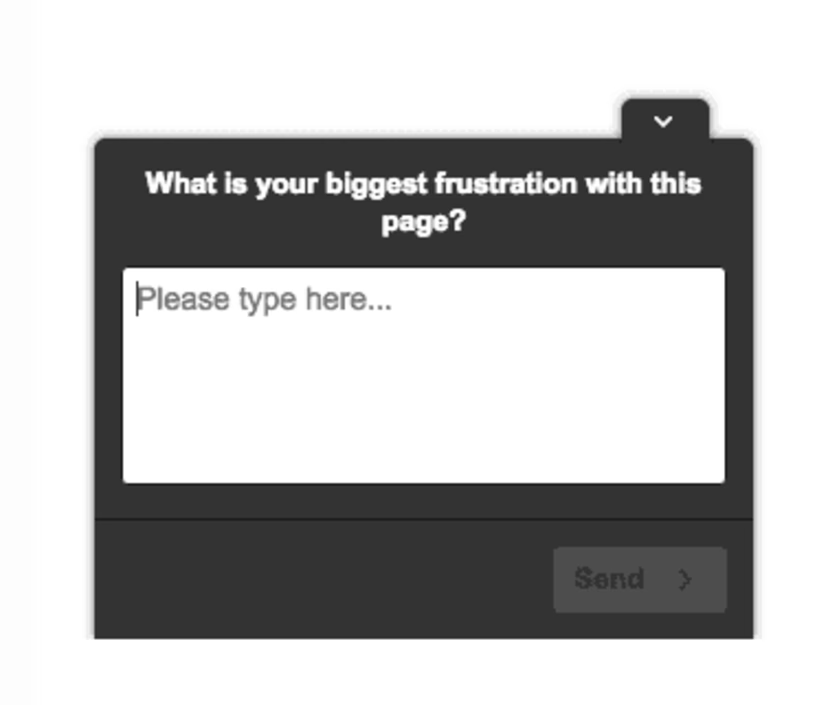
Next, TechSmith asks more specific questions related to the feedback users share, observes behaviors related to that feedback using heatmaps and recordings, and then makes the specific changes that customers want to see.
💡How to emulate TechSmith's feedback techniques: while TechSmith is a software company, just about any business can apply this customer-centric approach to its processes. For example, an ecommerce company could use the feedback and reviews users write about their purchases to inform design decisions for new products, ensuring customer delight and improving customer retention.
![[Visual] Feature prioritization survey](http://images.ctfassets.net/gwbpo1m641r7/zKdqi9ZuzMXQDseamqkpE/e302d0f9f56a311ee0d53cb317ecacc9/Feature_Prioritization_Survey.png?w=1920&q=100&fit=fill&fm=avif)
Don’t just guess what features or updates your users want to see—use a Contentsquare survey to ask them directly
Level up your customer feedback with digital experience insights
How and where you collect customer feedback often determines its quality and relevance. Proactively collecting feedback through diverse channels—and using it to engage and respond to customers—helps you create a delightful experience that increases your ability to retain them.
And, when you combine customer feedback with digital experience insights, you gain access to the reasons behind their feedback—both positive and negative—so you know exactly what’s working, or what needs improvement.
![[Visual] Stock group in office](http://images.ctfassets.net/gwbpo1m641r7/4qn7ZZ3yGGwvON1mesdH3s/c4d1c9d121d8d67b184011b4bcd2b6bd/Untitled_design__3_.jpg?w=3840&q=100&fit=fill&fm=avif)
